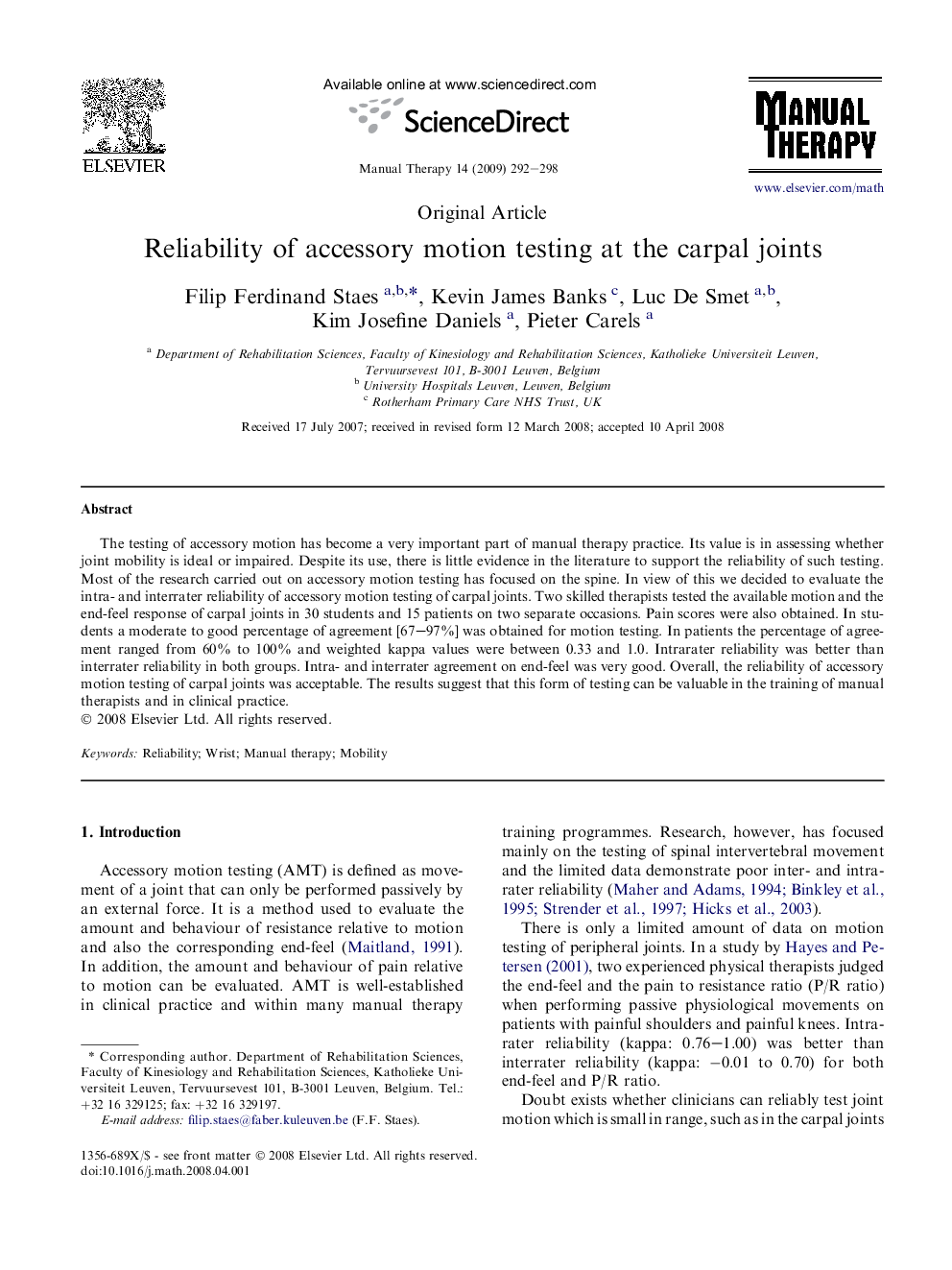| Article ID | Journal | Published Year | Pages | File Type |
|---|---|---|---|---|
| 2625543 | Manual Therapy | 2009 | 7 Pages |
The testing of accessory motion has become a very important part of manual therapy practice. Its value is in assessing whether joint mobility is ideal or impaired. Despite its use, there is little evidence in the literature to support the reliability of such testing. Most of the research carried out on accessory motion testing has focused on the spine. In view of this we decided to evaluate the intra- and interrater reliability of accessory motion testing of carpal joints. Two skilled therapists tested the available motion and the end-feel response of carpal joints in 30 students and 15 patients on two separate occasions. Pain scores were also obtained. In students a moderate to good percentage of agreement [67–97%] was obtained for motion testing. In patients the percentage of agreement ranged from 60% to 100% and weighted kappa values were between 0.33 and 1.0. Intrarater reliability was better than interrater reliability in both groups. Intra- and interrater agreement on end-feel was very good. Overall, the reliability of accessory motion testing of carpal joints was acceptable. The results suggest that this form of testing can be valuable in the training of manual therapists and in clinical practice.
